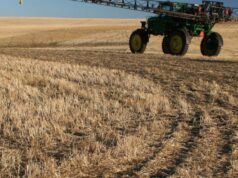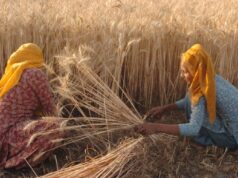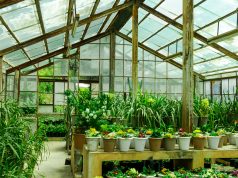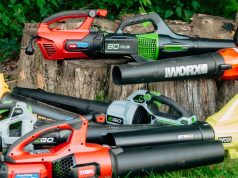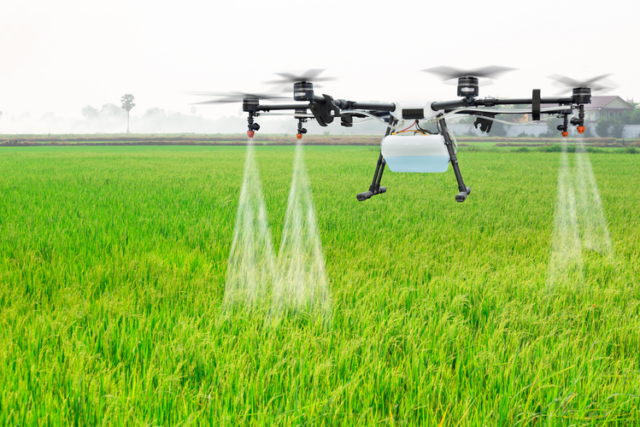
The agricultural industry is evolving quickly. As populations increase and cities expand, technologies like drone spraying have become incredibly important to increasing farm productivity.
While crop spraying has previously required manual labour and heavy machinery, advances in drone technology have simplified the process. During crop spraying, powerful drones are equipped with liquid holding tanks and spray nozzles. This allows them to be used to distribute chemicals like pesticides, herbicides and fertilisers. That might sound like something out of a science fiction movie, but it’s happening all over the world, and agricultural drones come with a few major benefits to farmers.
The Benefits of Drone Crop Spraying
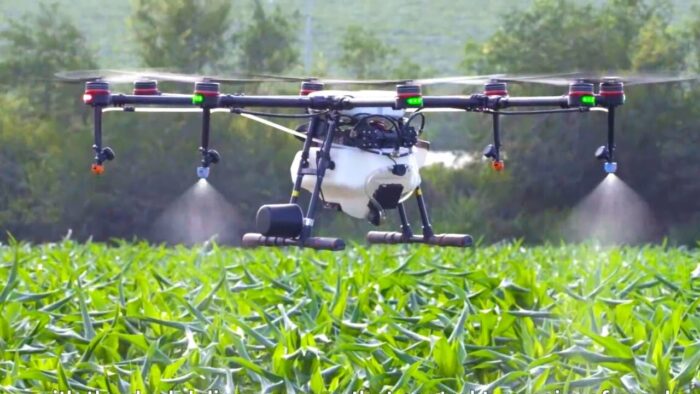
1. Increased Efficiency
Crop spraying drones are some of the most advanced platforms in the world. They can cover large areas in short periods of time, with some models able to treat up to 40 acres of crops per hour. These drones can also be programmed to fly in a consistent, systematic pattern that maximises coverage and reduces wastage of pesticides and fertilisers. This results in significant time and cost savings compared to traditional methods that required ground teams and dedicated machinery.
2. High Accuracy
Drones are equipped with high-accuracy sensors and GPS modules. This allows them to precisely identify areas or individual plants that require treatment, and it means pesticides and fertilisers can be applied accurately. This reduces wastage and prevents treatments from being over or underapplied, which can negatively affect crop health and soil productivity.
The accuracy of crop spraying drones means they are also suitable for weed control. Some advanced control systems can be used to accurately identify and treat weeds without impacting the surrounding crops.
3. Low Environmental Impact
Agricultural drones are a major win for local environments, which are often negatively impacted by pesticides and herbicides. Because drones are so precise in their targeting, they can minimise the amount of chemicals used and they eliminate problems like overspray. This helps to control issues such as runoff into water sources or unintended exposure to non-targeted plants and animals.
4. Improved Safety
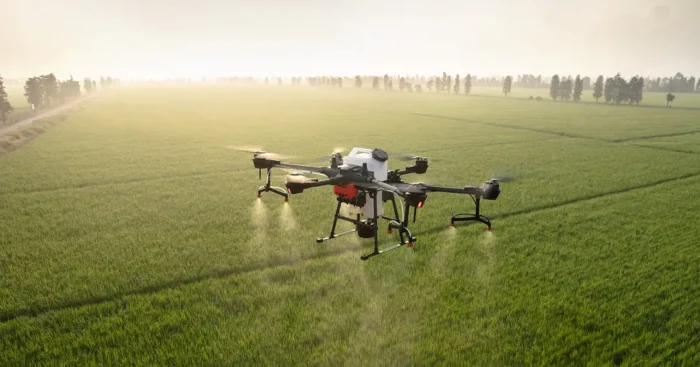
Crop spraying typically involves working with hazardous pesticides, herbicides and fertilisers. These types of chemicals can cause serious health issues. Using drones allows farmers to avoid direct exposure to chemicals and minimises the associated health risks. Additionally, traditional crop spraying methods often involve working with heavy machinery and challenging environments. Employing drones reduces the risk of accident and injury on the worksite.
5. Access to Any Terrain
One of the major benefits of drones is that they can be operated in almost any conditions, including over rough, challenging or steep terrain. These types of terrain have previously been a hindrance to farm machinery, but drones can navigate these areas with ease. This allows farmers to treat crops in difficult areas. That not only improves crop health and yield, it allows farmers to utilise more of their land, rather than relying on flat paddocks.
6. Simultaneous Data Collection
Modern farms rely on a steady stream of data to keep the operation moving. Information about the property, crops, wildlife and soil condition can all make a big difference to planning cycles. While this information can be retrieved by hand, drones are also capable of collecting high-resolution streams of data during crop spraying.
Crop spraying drones can be equipped with sensors such as GPS modules, LiDAR, thermal cameras and much more. These sensors can all be used to collect data about crops, crop health, wildlife, weeds, pests and the surrounding farmland. This information is useful in planning new projects, but it can also be used to deliver more effective spraying and improve overall crop yields.
7. Reduced Expenses
The initial investment in drone spraying systems can be high. But, compared to traditional farm equipment, drones are relatively inexpensive, and the ongoing running costs significantly outweigh the initial expense. By reducing labour, minimising wastage, optimising spraying patterns and boosting overall crop health and yield, the use of spraying drones results in greater profitability for farmers.
8. Automated Processes
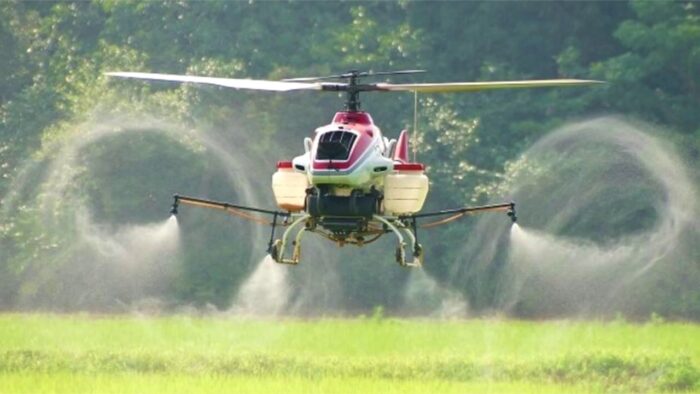
As farming evolves, many of the processes require less input from workers. The rise of automation is allowing farmers to increase productivity and yields without the need to increase the size of their teams. Agricultural crop spraying drones contribute to this by being fully ready for automation.
While crop spraying drones can be operated manually, they can also run programs automatically. That allows one operator to program and control multiple drones at once, with each drone following automated spraying patterns and returning to base to replenish its batteries, refill the spray tank or deposit data. This significantly reduces the time and money invested into regular spraying routines, allowing farmers to maximise yields without increasing workloads.


